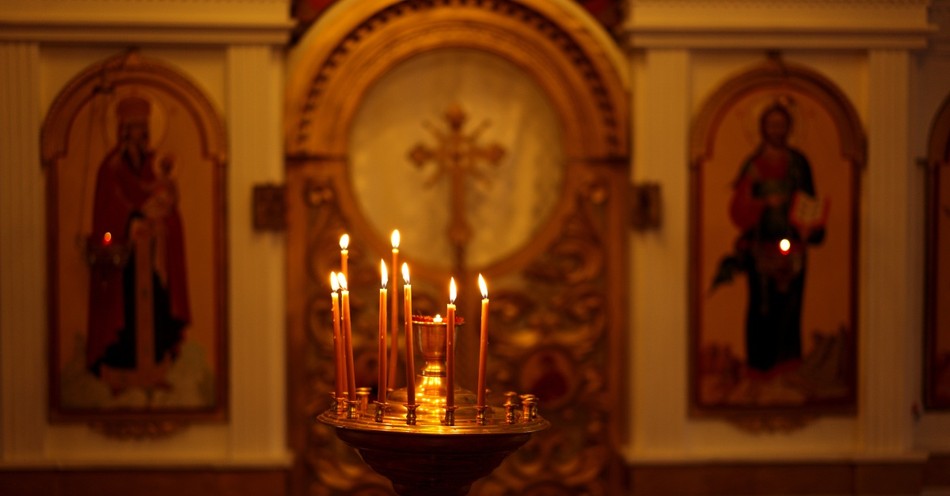What is a liturgy and how does it relate to the Bible? Does the Bible reference liturgical worship in the Old or New Testaments?
Here we will examine the meaning and context of liturgy from scripture, as God's Word gives us earthly instruction and heavenly resemblances of liturgical worship.
"And they devoted themselves to the apostles' teaching and the fellowship, to the breaking of bread and the prayers." (Acts 2:42)
What Is a Liturgy?
Liturgy is defined, according to Merriam-Webster, as "a eucharistic rite; a rite or body of rites prescribed for public worship."
By the middle of the first century, Christian worship was known by the term liturgy which literally means "the common work" or "the work of the people."
The early liturgy of the Christian Church's worship was composed of two vital parts: first, the liturgy of the word, including hymns, Scripture reading, and preaching, and second, the liturgy of the faithful, composed of intercessory prayers, and the Eucharist.
Let's explore the Old Testament origins and New Testament references to liturgical worship.
Liturgy in the Old Testament
Nearly all readers of the Bible realize there was liturgical worship in Israel. Shortly following the bestowing of the Ten Commandments to Moses (Exodus 20:24-26), directions for constructing the altar were set forth (Exodus 23:10-13), and the annual feasts (Exodus 23:14-19), and the various offerings and furnishings in the sanctuary (Exodus 25).
After this, chapters 26 through 30 deal with such matters as the design of the tabernacle, the altar, and the outer court, the priests' vestments and their consecration, and instructions for daily offerings.
Liturgical worship is also found in heaven, as God guided Moses to make the earthly place of worship a "copy and shadow of the heavenly things" (Hebrews 8:5). Heavenly worship is revealed in such passages as Isaiah 6:1-8, where we see the prophet caught up to heaven for the liturgy, and Revelation 4, which records the apostle John's vision of heaven's liturgy.
The Throne in Heaven: Revelation 4
After this I looked, and behold, a door standing open in heaven! And the first voice, which I had heard speaking to me like a trumpet, said, "Come up here, and I will show you what must take place after this."
At once I was in the Spirit, and behold, a throne stood in heaven, with one seated on the throne. And he who sat there had the appearance of jasper and carnelian, and around the throne was a rainbow that had the appearance of an emerald. Around the throne were twenty-four thrones, and seated on the thrones were twenty-four elders, clothed in white garments, with golden crowns on their heads.
From the throne came flashes of lightning, and rumblings and peals of thunder, and before the throne were burning seven torches of fire, which are the seven spirits of God, and before the throne there was as it were a sea of glass, like crystal. And around the throne, on each side of the throne, are four living creatures, full of eyes in front and behind: the first living creature like a lion, the second living creature like an ox, the third living creature with the face of a man, and the fourth living creature like an eagle in flight.
And the four living creatures, each of them with six wings, are full of eyes all around and within, and day and night they never cease to say, "Holy, holy, holy, is the Lord God Almighty, who was and is and is to come!"
And whenever the living creatures give glory and honor and thanks to him who is seated on the throne, who lives forever and ever, the twenty-four elders fall down before him who is seated on the throne and worship him who lives forever and ever. They cast their crowns before the throne, saying, "Worthy are you, our Lord and God, to receive glory and honor and power, for you created all things, and by your will they existed and were created."
Liturgy in the New Testament
The answer to comprehending liturgy in the New Testament is to realize the work of the High Priest, our Lord Jesus Christ, who established the new covenant. Christ is "a priest forever" (Hebrews 7:17-21). Christ is referenced not only as a priest but as a liturgist: "a Minister of the sanctuary and of the true tabernacle which the Lord erected, and not man. (Hebrews 8:2 NKJV).
Furthermore, Christ is the "Mediator of a better covenant" (Hebrews 8:6). In the words of the Lord, "This cup is the new covenant in My Blood" (1 Corinthians 11:25).
At the Last Supper, Jesus instituted the Eucharist, the communion service, when He took bread and wine, gave a blessing, and said to His disciples, "This is my body which is given for you; do this in remembrance of Me" and "This cup is the new covenant in My blood, which is shed for you" (Luke 22:19-21). In the New Testament, we know the Church participated in Communion at least each Lord's Day from Acts 20:7-11.
Just as the blood of bulls and goats in the old covenant prefigured Christ's sacrifice to come, so the eucharist feast brings to us the fullness of His new covenant offering, completed at the Cross, fulfilled in His Resurrection. This once-for-all offering of Himself (Hebrews 7:27) which He as High Priest presents at the heavenly altar is an offering in which we participate through liturgical worship.
"For such a High Priest was fitting for us, who is holy, harmless, undefiled, separate from sinners, and has become higher than the heavens; who does not need daily, as those high priests, to offer up sacrifices, first for His own sins and then for the people's, for this He did once for all when He offered up Himself." (Hebrews 7:26-27)
Sources:
BibleStudyTools.com
The Orthodox Study Bible - St Athanasius Academy of Orthodox Theology
Photo credit: Getty/Anna_Anikina
Christianity.com's editorial staff is a team of writers with a background in the Christian faith and writing experience. We work to create relevant, inspiring content for our audience and update timely articles as necessary.



_639003522088907085.jpg)